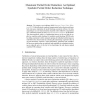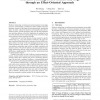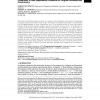26 search results - page 3 / 6 » Symbolic pruning of concurrent program executions |
CAV
2009
Springer
14 years 8 months ago
2009
Springer
Abstract. We present a new technique called Monotonic Partial Order Reduction (MPOR) that effectively combines dynamic partial order reduction with symbolic state space exploration...
EUROSYS
2010
ACM
14 years 4 months ago
2010
ACM
Debugging real systems is hard, requires deep knowledge of the code, and is time-consuming. Bug reports rarely provide sufficient information, thus forcing developers to turn int...
IFM
2009
Springer
14 years 2 months ago
2009
Springer
We present the new technique of dynamic path reduction (DPR), which allows one to prune redundant paths from the state space of a program under verification. DPR is a very general...
ASPLOS
2010
ACM
14 years 2 months ago
2010
ACM
Multicore technology is making concurrent programs increasingly pervasive. Unfortunately, it is difficult to deliver reliable concurrent programs, because of the huge and non-det...
CORR
2010
Springer
13 years 2 months ago
2010
Springer
am analysis and has been widely studied. In this paper we consider this problem at the abstraction level of program schemas in which computations occur in the Herbrand domain of te...



